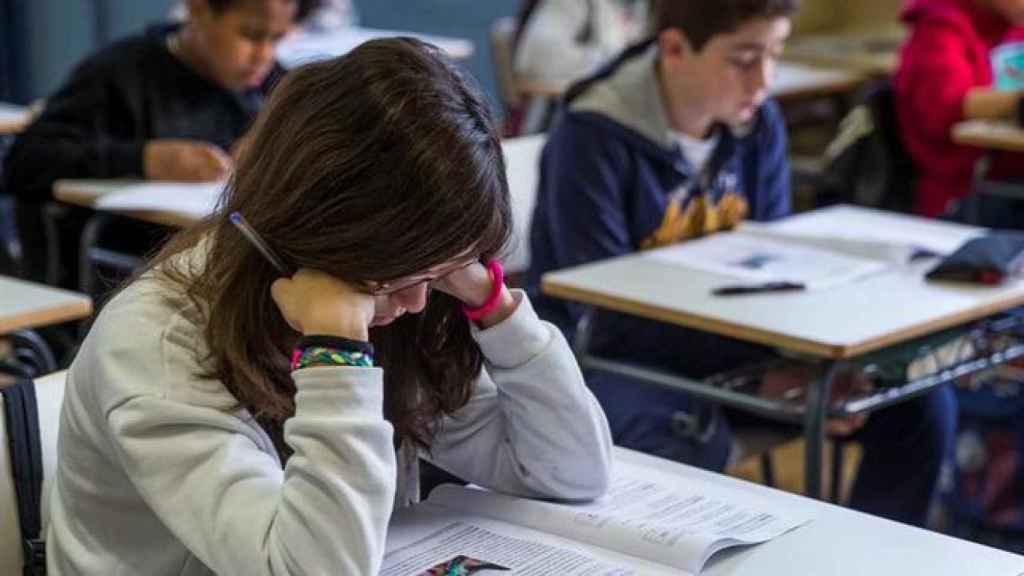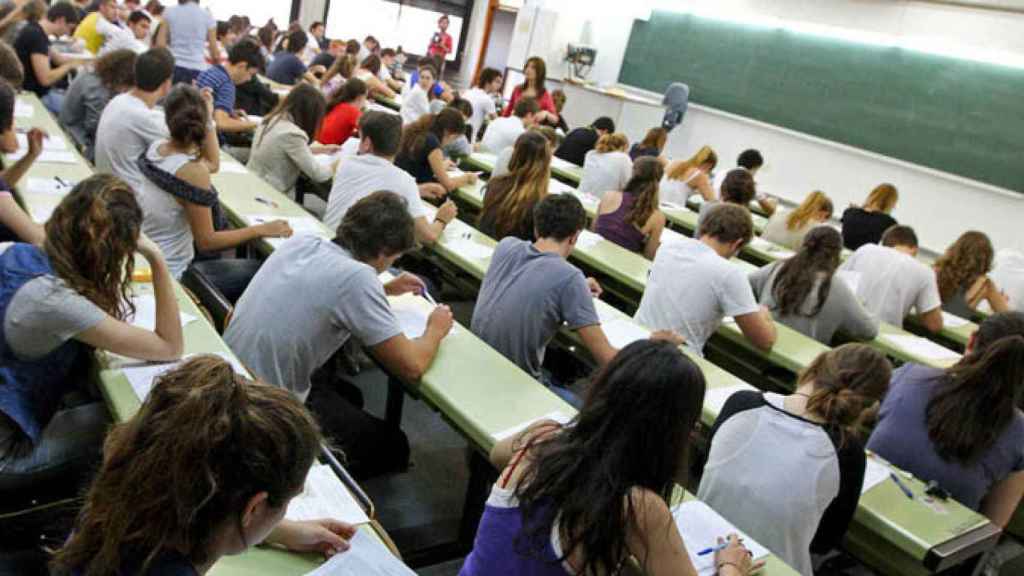Related news
8.7% of Spanish students in the first stage of secondary education and 7.9% of the second stage repeated the course in 2019, when the averages of the 32 OECD countries were 1.9 and 3%, respectively, data that make Spain the country with the highest number of repeaters in this educational phase.
In the first stage of secondary school, no other country has as many repeaters as Spain, and those that come closest are far behind: Belgium with 5.8% and Portugal with 5.6%. In the second stage, Spain ranks second behind the Czech Republic (8.2) and again ahead of Belgium (7.7%) and Portugal (7.2%).
In addition, the percentage of young people between 18 and 24 years of age who neither study, work, nor are in training (known as ninis) was in Spain in 2019 clearly higher than the OECD average: 19.2% compared to 14.4%. If we focus the statistics on the European Union, Spain is in the lead, only behind Italy.
These are some of the conclusions of the annual report on educational statistics published this Thursday by the Organization for Economic Cooperation and Development (OECD), and that puts figures on the problem of school failure and its consequences.
The problem of grade repetition, as is also the case in other countries, affects boys more than girls, since the former represent 60% of repeaters in the first stage of secondary school and 56% in the second, when in the OECD they are 61% and 57%.
In addition, in relative terms it increased more in the first year of the pandemic, going to 22% in 2020, compared to 16.1% in the organization as a whole.
School failure
The school dropout rate in 2018 stood at 17.9%, the lowest figure in the last decade
The phenomenon of an oversized school failure is not new in Spain. In the group of young adults aged 25 to 34, 28.3% had not even completed the second stage of secondary school, practically double the OECD average of 14.8%.
That was above all its European partners, not to mention the United States (6%), Canada (5.3%) or South Korea (2%). Of the OECD member countries, only Mexico (46.1%) and Costa Rica (44.1%) were above.
The unemployment rate in this group of young adults in Spain, which was already much higher in 2019 than in the OECD as a whole, rose four percentage points more in 2020, to 27.6%, while the average for the organization increased in two points, at 15.1%.
The authors of the report find that people with a low educational level not only suffer particularly high unemployment rates, but also that their level of remuneration is very low in relative terms.
To the point that in Spain, 36% of adults aged 25 to 64 who did not finish the second stage of secondary school in 2018 earned less than half of the country’s median salary. They were 27% in the OECD as a whole.
Ratios
The ESO title can be obtained without passing the stage and with two failures.
The authors of the report recall that Spain dedicated 2.7% of its gross domestic product (GDP) to pre-university education in 2018, below the 3.2% average in the OECD.
Chile was in 2019 the OECD country with the most pupils per class in primary school in public schools, 28.7. Japan (27.2), the United Kingdom (27.2), Israel (26.8), Colombia (24.8) and Mexico (24.7) were also well above the average of 21.1 students.
Spain was in the middle of the table with 20.9 children per class, slightly above the average for the European Union (19.7). The least crowded classes of students were those in Costa Rica (16) and Luxembourg (15).
Regarding the number of students per teacher in primary school, Mexico was in the lead with 24.4, well above the average of 14.5. Colombia (23.1), the United Kingdom (19.9), France (18.8) and Chile were also clearly higher.
Spain remained at the bottom of the ranking with 13.6 students per teacher, although the European Union average was slightly lower (13.1) and there were three countries below the 10 threshold: Poland (9.6 ), Luxembourg (9) and Greece (8.7).
Follow the topics that interest you
Reference-www.elespanol.com

